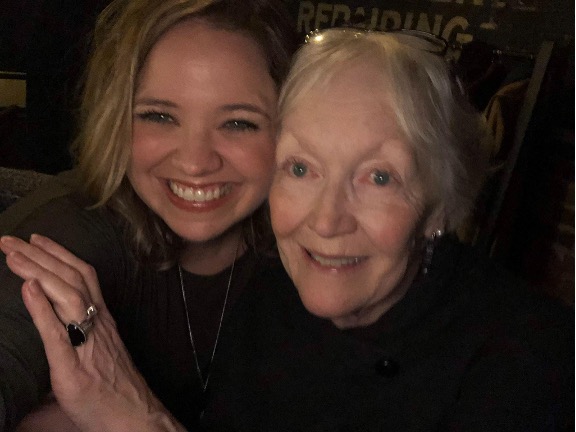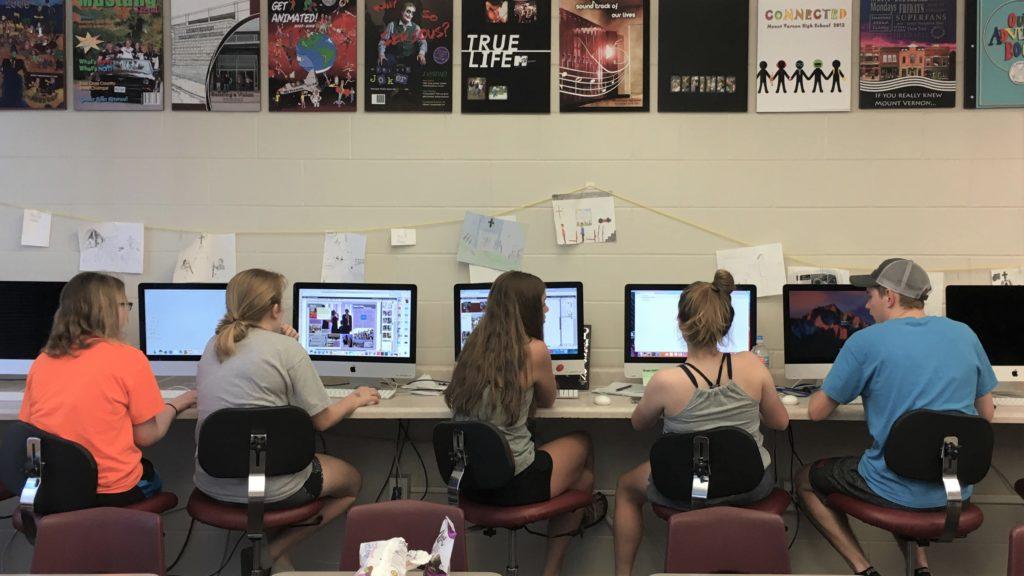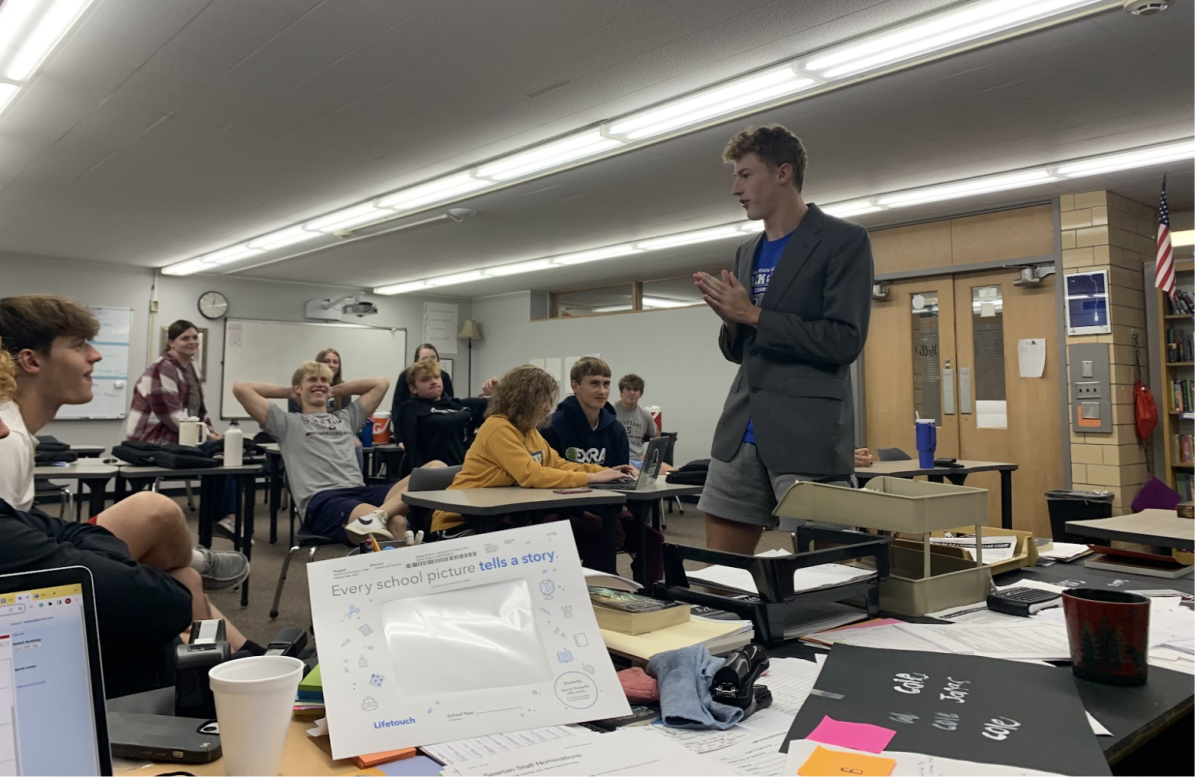There is strong support for teacher book talks, a practice I learned about from Nancie Atwell’s In the Middle and later in Penny Kittle’s Book Love. While I am totally in favor of the teacher book talk, one of the best ways to get kids reading is to get them talking about books. “To foster a love of books, children need opportunities to talk about them. Studies suggest that informal conversations around books, such as book talks or book chats, enhance children’s motivation to read” (Neuman, n.p.). Readers of any age often choose to read books people recommend, especially if the recommendation is personalized to what the reader likes. But for those students with limited reading experience, how do they even know what they like? How can we increase the likelihood they will find a good match, repeatedly, while increasing their knowledge of books they might like? Let them do what they want to do anyway: talk to their peers, of course!
Here are four practices to frame student talk about books in your classroom, without using formal speech or discussion structures or increasing your paperload.
The TBR List: If you are a reader, you probably have a TBR (to be read) pile or two in your house. Students need some sort of record-keeping system for remembering books they’ve heard about that they might want to read. The last couple pages of our class notebook contain the TBR list. Any time we are talking about books in some way, that page is open and ready to record our reading intentions. When students ask me for a recommendation, my first question is always, “What’s on your TBR list?” The systematic use of a TBR list to track interesting titles helps students learn to have a reading plan. While there are terrific apps or sites to use like Goodreads, and I do use it as well, the trusty old notebook is my standby. Updating this list is a routine I emphasize strongly throughout the year. Sometimes, I have kids pair up and compare TBR lists, talking about similarities and differences and adding titles. Take a look at the following student TBR lists to see what a couple 8th grade students are interested in reading. Check marks and crossout indicate books the student has read.

Buzzing: I first learned about this simple strategy in Matt Copeland’s book Socratic Circles, though the original source of the activity comes from Stephen Brookfield and Stephen Preskill’s Discussion as a Way of Teaching. This strategy can be used as an icebreaker before more formal discussions, as a sharing tool following a notebook response, or any time you want kids to get up and move around the room while talking to multiple partners. Mondays after independent reading time is an opportune time to start the week by sharing what kids are reading. You can give them verbal prompts to meet specific learning targets, you can have them talk from a list of prompts prepared in advance, or you can let the conversations flow naturally about whatever book they are currently reading or just finished. Copeland recommends that topics be “open-ended and allow students to think critically and speak persuasively about the material” (42). Example topics I’ve used before are:
- why I chose the book or how it found me
- my favorite moment in the book so far
- what is keeping me reading/ holding my interest
- who should read it next and why
We usually change partners three or four times at one minute intervals. Then they record any books they heard about that they want to read on their TBR List.
Book Discovery Box: This strategy evolved after a book pass session. You can read more about the Book Pass strategy (sometimes called speed-dating) in one of the most useful books I own: Mini-Lessons for Literature Circles by Harvey Daniels and Nancy Steineke. I discovered that about ten or so books, depending on size, fit nicely in the lid of a copy paper box. After we finished our book pass, a student asked if we could leave the book boxes on the tables and switch them around every couple of days. The closer the student’s proximity is to books, the more likely they will read, so I readily agreed. Pretty soon, I started planting books I thought students would like in the box at their tables for them to discover. Often other students would say, “Hey, I think this book is here for you. Put it on your TBR!” And conversation ensued. Students would wander around to other book boxes in the room when they arrived and talk about books until the bell. I loved that they started realizing what others like to read and taking ownership of finding books for others as well as their own TBR lists.

Books We Love Shelf: I discovered this strategy while watching Nancie Atwell discuss her classroom setup on the DVD Reading in the MIddle: Workshop Essentials. She stressed the importance of giving students ownership over a shelf in the classroom, so it starts the year empty and students fill it with their favorites. I gave it a try. I taught students about “their” shelf and showed them the tiny heart stickers I bought for them to put on the spine to indicate it belonged on the Books We Love Shelf. As the year progressed, students realized that all the best, peer-recommended books were in one place in the classroom. This convenience narrowed the field and vastly improved selection time. A student only had to linger in front of the shelf for a minute or two before a student would slip up and make recommendations. And then another student would pop over to suggest another book. And someone else would offer another suggestion. Once a student made a choice, I had her record the other recommendations in her TBR list. Many passionate and persuasive conversations happened in front of this shelf over the last few years.

These four strategies promoted a strong reading community, buzzing with actively engaged readers talking about high quality young adult literature. Isn’t that what we’re shooting for?
And“I Never Thought I’d be a Writing Teacher”Michelle Tremmel, Ph.D.is a Senior Lecturer in the Department of English at Iowa State University. For 20 years she taught middle and high school English in Michigan, and she now works primarily with pre-service middle and high school English teachers and graduate teaching assistants teaching writing. Among her publications are articles in the Journal of Teaching Writing, Teaching English in the Two-Year College, and Composition Studies on working with student writers.
Jenny Cameron Paulsen is an instructional technology coach, former English teacher, and future social studies teacher at Holmes Junior High in Cedar Falls. She is Past-President & NCTE Liaison for the Iowa Council of Teachers of English and a state representative for ALAN. When she doesn’t have her nose firmly pressed into a book, you might want to check her pulse and breathing! Her passions are history & genealogy. She loves working with discussion techniques and censorship issues in the classroom. You can find her fleeting and occasional thoughts about teaching, learning, and YA at http://2020teachervision.blogspot.com or on Twitter @jennypaulsen555.
Resources
Atwell, Nancie. In the Middle: a Lifetime of Learning about Writing, Reading, and Adolescents. Heinemann, 2015.
Atwell, Nancie. Reading in the Middle Workshop Essentials. DVD. Heinemann, 2011.
Brookfield, Stephen D., and Stephen Preskill. Discussion as a Way of Teaching: Tools and Techniques for Democratic Classrooms. Wiley, 2012.
Copeland, Matt. Socratic Circles: Fostering Critical and Creative Thinking in Middle and High School. Stenhouse Publishers, 2005.
Daniels, Harvey, and Nancy Steineke. Mini-Lessons for Literature Circles. Heinemann, 2004.
Kittle, Penny. Book Love: Developing Depth, Stamina, and Passion in Adolescent Readers. Heinemann, 2013.
Neuman, Susan B. “The Importance of a Classroom Library.” Retrieved 7 Apr 2018. http://teacher.scholastic.com/products/paperbacks/downloads/library.pdf







